Comments / Questions (34)
![]() Drops Design wrote:
Drops Design wrote:
Ja efter de 6 pinde retstrik fortsætter du i glat med vrangen ud igen. Bærestykket skal strikkes i retstrik
01.10.2009 - 09:21
![]() Lotte Andersen wrote:
Lotte Andersen wrote:
Hej Garnstudio Jeg er i tvivl om det med retstrik og omvendt glat. Jeg starter med 6 p ret, skifter til omvendt glat, men efter mønster 1 skal jeg igen strikke 6 p ret. Hvad skal jeg efter de 6 p, skal jeg så igen strikke omvendt glat, eller skal jeg fortsætte i ret. Hvad med bærestykket efter ærmerne er sat på, skal det være i retstrik? Det forstår jeg ikke helt med, ser det ikke ligedan ud som omvendt glat?
30.09.2009 - 23:10
![]() DROPS Design wrote:
DROPS Design wrote:
Hej Britta, Om du läser minskninstips: Minskningstips (gäller raglan): Alla minskningar görs från rätsidan: Börja 2 m före märktråden: 2 rm tills, märktråd, lyft 1 m som om den skulle stickas rät, 1 rm, drag den lyfta m över så innebär det minskning med 8 maskor avm per varv. Lycka till!
17.09.2009 - 13:29
![]() Britta Vesterlund wrote:
Britta Vesterlund wrote:
Hej Garnstudio! Skulle behöva få ett förtydligande av raglanminskningen. Ska man bara minska 4 maskor /avm.varv? borde man inte minska en maska på varje sida om märktråden? Hoppas på hjälp, tack på förhand
16.09.2009 - 21:33
![]() Drops Design wrote:
Drops Design wrote:
Når du strikker rundt på rundp strikkes retstrik således: 1.omg ret og 2.omg vrang. Og Glatstrik strikkes ret på alle pinde. Når du strikker frem og tilbage på p strikkes retstrik såledet: Ret både frem og tilbage på p. Og glatstrik strikkes ret på retsiden og vrang på vrangen. God fornøjelse
22.10.2008 - 09:51
![]() Henriette Villhelmsen wrote:
Henriette Villhelmsen wrote:
Hej Garnstudio, Kunne godt tænke mig at få denne "pasus" i opskriften forklaret. "Strik 6 omg retstrik – se forkl over. Nu skiftes der til rundp 5 og der strikkes videre i glatstrik med vr ud. Husk på Strikkefastheden! Når arb måler 28 cm fortsættes der således: * 7-8-9-11-13-15 m glatstrik med vr ud, M.1" Og hvad er forskellen på retstrik og glatstrik? På forhånd tak og på genhør Med venlig hilsen Henriette Vilhelmsen
20.10.2008 - 14:40
![]() Lisbeth wrote:
Lisbeth wrote:
Super flot trøje.Jeg har strikket den på rekorttid. Havde kun problemer med maskeantal i halsen ellers passer alt perfekt!
20.08.2008 - 09:02
![]() Coleen Glen wrote:
Coleen Glen wrote:
Fa-048 is to die for
15.07.2008 - 03:08
![]() Hilde wrote:
Hilde wrote:
Vedig fin og anvendelig. Den vil både jeg og min datter ha. Håper inderlig det kommer mømster på denne :-
28.06.2008 - 01:38
![]() Anna Sparr wrote:
Anna Sparr wrote:
Så fantastiskt snygg, så jag saknar ord!
24.06.2008 - 17:31
Megan |
||||
|
|
||||
Knitted DROPS jumper in ”Fabel” and ”Alpaca” with stripes and raglan sleeve. Size S - XXXL.
DROPS 109-53 |
||||
|
Garter st, in the round): K 1 round, P 1 round. Garter st, back and forth on needle: K all rows. Stripes: Body piece: Fabel 905 + Alpaca 517: From cast on row to 32 cm. Fabel 905 + Alpaca 501: From 32 cm to 50-51-52-53-54-55 cm. Fabel 905 + Alpaca 100: From 50-51-52-53-54-55 cm to finished measurements. Sleeve (same measurements for all sizes): Fabel 905 + Alpaca 8309: From casting on row to 13 cm. Fabel 905 + Alpaca 506 From 13 cm to 26 cm. Fabel 905 + Alpaca 517: From 26 cm to 39 cm. Fabel 905 + Alpaca 501: From 39 cm to finished measurements. Pattern: See diagram M.1. Knitting tip: If your knitting tension doesn’t fit, i.e. is too tight, the raglan will be too short and the armhole to small. You may compensate for this by working 1 extra row without dec at regular intervals in between dec. Decreasing tip (applies to raglan): Make all dec from RS: Beg 2 sts before Marking Thread (MT): K2 tog, MT, slip 1 st as if to K, K1, psso. Body piece: Worked in the round on circular needle. Cast on 210-220-230-250-270-290 sts on circular needle size 4.5 mm with 1 thread Fabel 905 + 1 thread Alpaca 517. Work 6 rounds garter st – see above. Change to circular needle size 5 mm and continue ion reverse stocking st. Remember the knitting tension! When piece measures 28 cm continue as follows: * 7-8-9-11-13-15 sts in reverse stocking st, M.1 *, repeat from *-* a total of 10 times = 140-150-160-180-200-220 sts. Work 6 rounds garter st, at the same time on first round adjust no of sts to 136-150-164-180-202-222. Insert 2 Marking Threads (MT) in piece, 1 at the beg of round and 1 after 68-75-82-90-101-111 sts (to mark the sides). Continue in stripes – see above. When piece measures 32 cm inc 1 st on each side of both MT (= 4 inc per round) on every 5.5-5.5-6-6-7-7 cm a total of 3 times = 148-162-176-192-214-234 sts. When piece measures 48-49-50-51-52-53 cm cast off 8 sts each side (i.e. 4 sts on each side of both MT) for armhole = 132-146-160-176-198-218 sts. Put piece aside and knit the sleeves. Sleeve: Worked in the round on double pointed needles. Cast on 40-40-42-44-46-46 sts on double pointed needles size 4.5 mm with 1 thread Fabel 905 + 1 thread Alpaca 8309. Work 6 rounds garter st. Insert 1 MT at beg of round. Change to needle size 5 mm and continue in reverse stocking st and stripes – see above. When piece measures 8 cm inc 1 st on both sides of MT on every 4.5-3.5-3-3-2.5-2.5 cm a total of 10-11-12-13-14-15 times = 60-62-66-70-74-76 sts. When piece measures 50-49-49-48-48-47 cm cast off 4 sts on both sides of MT for armhole = 52-54-58-62-66-68 sts. Put piece aside and knit the other sleeve. Yoke: See Knitting tip! Slip sleeves in on the same circular needle as body piece where cast off for armholes = 236-254-276-300-330-354 sts. Insert a MT in each transition between sleeves and body piece = 4 MT. Change to circular needle size 4.5 mm and continue in garter st, at the same time dec for raglan – see Decreasing tip. Dec on every 4th round 9-9-9-9-8-8 times and then on every other round 12-13-15-17-20-21 times. At the same time when piece measures 59-61-63-65-67-69 cm slip the middle 6-9-10-12-15-17 sts on front piece on a stitch holder and complete piece back and forth on needle. Cast off to shape the neckline at the beg of every row: 2 sts 2-2-2-2-3-4 times and 1 st 1-2-3-4-4-5 times. After all dec are complete there are 52-57-60-64-71-79 sts on row. K 1 row, at the same time dec 4-7-8-10-13-19 sts evenly = 48-50-52-54-58-60 sts. Neckline: Pick up 32-34-36-38-38-40 sts along neckline on front piece (includes sts on stitch holder) on small circular needle size 5 mm with 1 thread Fabel 905 + 1 thread Alpaca 100 = 80-84-88-92-96-100 sts. Work 4 rounds garter st and continue in reverse stocking st. When piece measures 10 cm inc 10 sts evenly and repeat the inc when piece measures 20 cm = 100-104-108-112-116-120 sts. When piece measures 25 cm inc 20 sts evenly = 120-124-128-132-136-140 sts. Work 6 rounds garter st and cast off. Assembly: Sew openings under arms. |
||||
Diagram explanations |
||||
|
||||
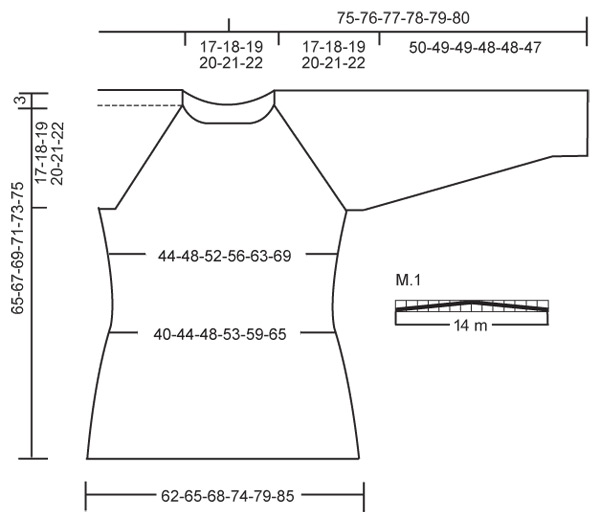 |
||||
Have you finished this pattern?Tag your pictures with #dropspattern or submit them to the #dropsfan gallery. Do you need help with this pattern?You'll find 27 tutorial videos, a Comments/Questions area and more by visiting the pattern on garnstudio.com. © 1982-2025 DROPS Design A/S. We reserve all rights. This document, including all its sub-sections, has copyrights. Read more about what you can do with our patterns at the bottom of each pattern on our site. |
||||







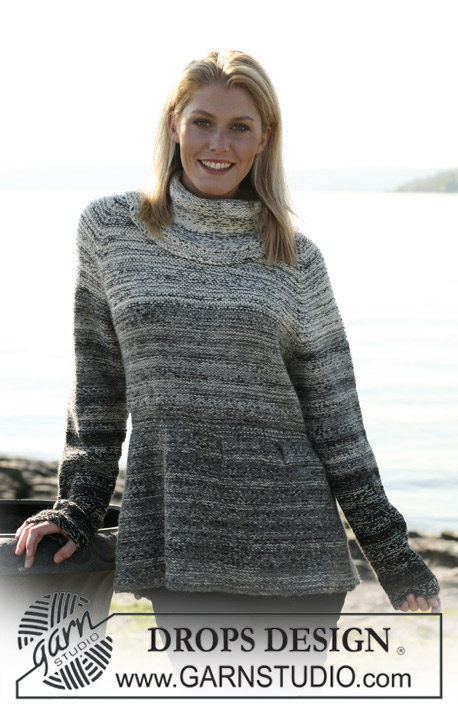
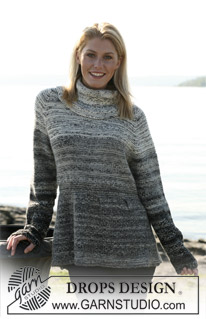




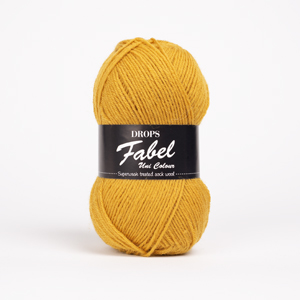
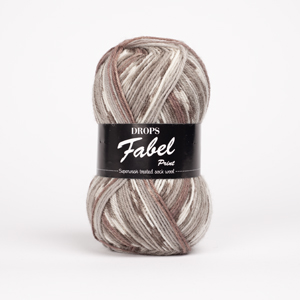
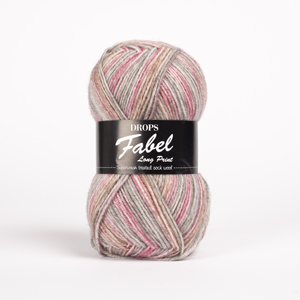



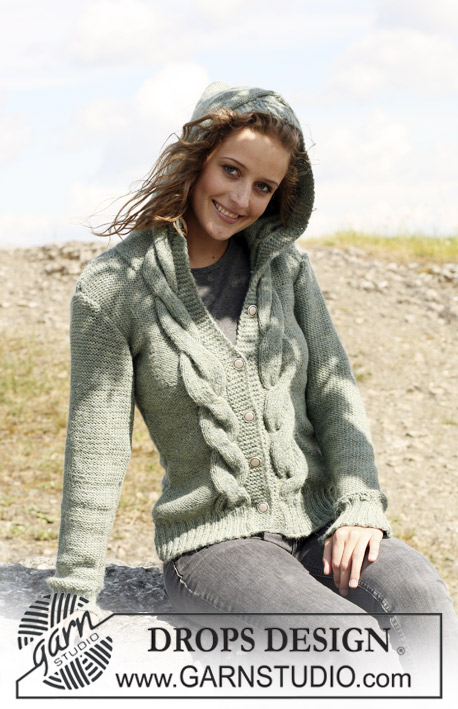












































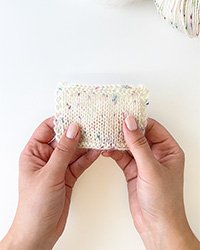

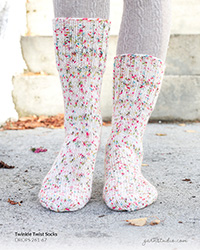
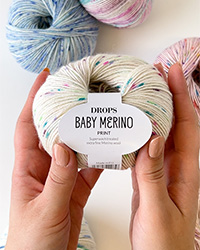
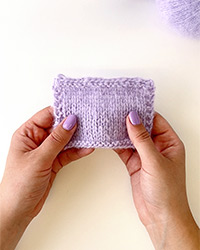
Post a comment to pattern DROPS 109-53
We would love to hear what you have to say about this pattern!
If you want to leave a question, please make sure you select the correct category in the form below, to speed up the answering process. Required fields are marked *.